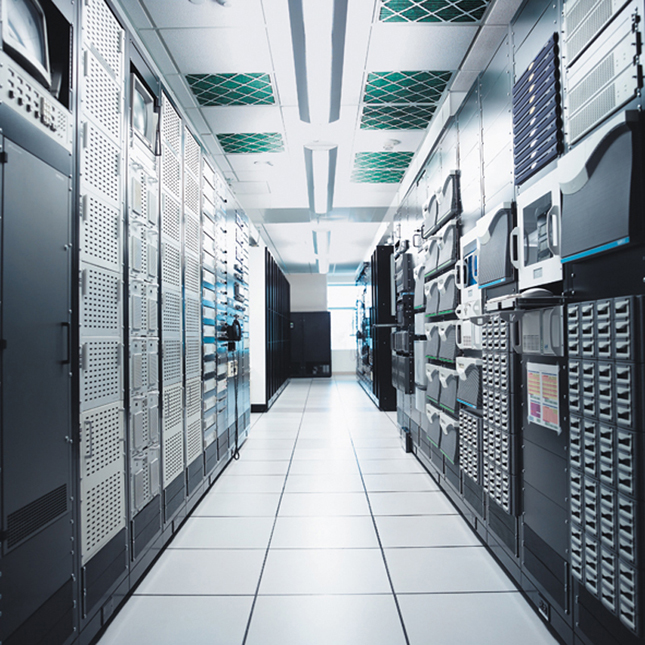22 June 2015

They appointed Siemens as their technical partner based on their ability to deliver multiple building systems and create high level protection and availability, which are key requirements for an efficient data centre. Siemens has delivered intelligent safety and security technology; reliable building automation that cools and conditions the air based on demand, keeping the servers from overheating; and an uninterruptible and redundant power supply.
The project demonstrates Siemens’ ability to integrate seamlessly across a variety of disciplines. The data centre has been continually enhanced as it has evolved, with modifications to the deployed building automation, security technology and power supply solutions to meet the growing requirements for availability, protection and energy efficiencies.
Redundancy, high system availability, security and energy efficiency are key elements for Citigroup. Processed data is stored in duplicate within the data centre and mirrored to other Citigroup data centres. In the building itself, a dual power feed, duplicate downstream medium and low voltage switchboards with duplicate switches, busbars and dual cooling technology ensure maximum redundancy. If a power failure were to occur, two independent uninterruptible power supply units and the emergency power supply would take over, ensuring continued power for at least 72 hours.
This means that the FDC meets the Tier IV standard awarded by the Uptime Institute for maximum redundancy and 99.995 per cent availability.
To guarantee the safety and security of the building, assets and processed data, all the installed Siemens security and safety systems were aligned with Citigroup’s global safety and security requirements, as well as the facility for regular emergency evacuation and safety drills.
The building automation, security, fire safety and power supply solutions include: a Desigo building automation system; 1,600 Sinteso fire detectors; early fire detection via smoke extraction systems; fence sensors and cameras for the 1,300-m perimeter fence; 150 internal and external CCTV cameras; an intrusion detection system with 168 door sensors; 150 Sivacon low-voltage switchboards; 104 NXAIR medium-voltage switchboards and 96 Sentron transfer control devices. Approximately 2.3 km of busbars and 22 km of medium-voltage cable were laid for the power supply.
The building was awarded Leadership in Energy and Environmental Design (LEED) Platinum certification just one year after it opened, making the it one of the most energy efficient data centres in the world. The Desigo building automation system from Siemens plays a central role in maintaining high energy efficiency and the standards of the LEED certification.
Turning the data centre green
Increasing energy efficiency of data centres is a top priority for the industry. The IT infrastructure of a data centre requires a great deal of energy, however utilising intelligent lighting and cooling control can considerably lower energy consumption.
Other measures at the FDC include cold aisle containment, which allows the cold air cooling the servers through the raised floor to be directed in a more targeted way, thus reducing the air volume. In addition, the warm exhaust air from the server rooms, which has a heat of approximately 30 deg C, can be utilised for local heating through the use of heat pumps.
“Our motivation was to continuously save energy,” explains Norbert Heberer of Cofely Deutschland, the data centre’s operator. “Building automation allows us to individually control and continuously monitor the heating, ventilation and cooling technology that is so vital to us.”
“Citigroup has had success with free cooling, relying on cool outside air and the Desigo building automation system adjusts the cooling performance to meet the actual demand. In addition Citigroup has lowered the pressure of the cool air which exits from the raised floor and cools the server racks by 10 Pa.”
The FDC is designed for thirty years of operation. The systems are flexible and continue to grow along with the data centre’s requirements. The planned power capacity of the FDC was 5 MW. In its current configuration, the data centre uses 5,000 m²of its 10,000 m²for server operations.
At the beginning of operations, the data centre used 900 kW of electricity. Additional utilisation and occupancy has increased the electricity requirement to exceed 1MW. “One challenge was to continually adjust the power supply and cooling capacity to the demand, from the planned 5 MW of total capacity to the actual starting load of 900 kW and then to the current level of about 1.5 MW,” comments Heberer.
“When operations started, we had a less efficient ration of consumed energy to server energy demand, giving us a Power Usage Effectiveness, PUE, of 2.8,” he adds.
Technicians analysed the complete electrical supply to adjust the power supply and cooling capacity. Siemens then worked in collaboration with the technicians to optimise the cooling control.
“Now all the dependencies of free cooling, pumps and chillers operate together as a bundle and can be controlled as demand dictates,” explains Heberer. To adjust energy efficiency based on demand and lower the PUE value, lighting has been tied to access control so that lights turn on only when server rooms are occupied. In addition, air conditioning in the server rooms has been set to the optimal operating point so now less cooling capacity is needed. Air pressure in the cold aisle has also been lowered by 10 Pa.
As a result of working closely with Siemens, the current PUE of the FDC is 1.5. Citigroup and Siemens continue to work in collaboration to exploit energy savings and further reduce the PUE.








